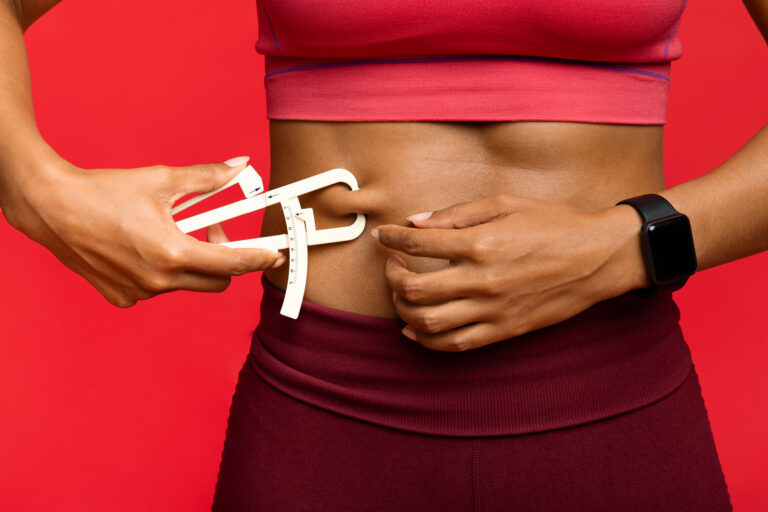Imagine transforming your body, amplifying your fitness, and unleashing a calorie-burning machine – all in less time than it takes to watch a sitcom episode. Sounds enticing, right? High-Intensity Interval Training, commonly known as HIIT, is the powerhouse workout that promises all this and more. A sizzling topic in the fitness realm, HIIT combines extreme effort with short rests, resulting in a workout dynamo that is not just efficient but also supremely effective. In this article, we dive deep into the wonders of HIIT and unveil how it continues to burn calories even when you’re off the exercise mat. Get ready to HIIT it up!
High-Intensity Interval Training or HIIT is not just another fitness trend. It’s a refined exercise methodology where you give all-out, one hundred percent effort through quick, intense bursts of exercises, followed by short recovery periods. This cardiovascular exercise strategy alternates between intense anaerobic exercises and less intense recovery periods.
Central to the magic of HIIT is the phenomenon known as “excess post-exercise oxygen consumption” (EPOC), fondly termed the “afterburn effect.” What’s this magic? Here’s a breakdown: When you push your body during those intense HIIT phases, it goes into oxygen debt. Post-workout, your body plays catch up, trying to restore and replenish itself. This effort means your body continues to burn calories even when you’re resting, as it consumes more oxygen to settle the previous debt.
An intriguing study threw light on HIIT’s ability to overshadow traditional workouts. Participants performing HIIT sessions incinerated 25-30% more calories than those engaged in steady-state exercises. HIIT’s charm? It not only incinerates calories during the session but also ensures that the calorie torch keeps blazing post-exercise, thanks to the EPOC effect.
Beyond Burning Calories: HIIT’s Health Arsenal
The heart, often symbolized as the core of our emotional essence, is essentially the core of our physical well-being. As with any muscle in the body, consistent and varied training results in increased strength and functionality. High-Intensity Interval Training provides an intensive regimen for our heart. Those pulsating, high-intensity segments don’t merely induce sweat and exhaustion; they command the heart to pump blood faster, catering to the body’s augmented demand for oxygen and nutrients. Over time, this intense cyclic activity bolsters the heart’s muscle tissues, making it more resilient and efficient. Consequently, an individual practicing HIIT regularly will likely witness enhanced cardiovascular health. Reduced resting heart rates, increased cardiac output, and a decline in cholesterol levels are just some of the accolades HIIT practitioners can expect, placing them on a path toward long-term heart health.
Athletes, marathoners, and even the occasional jogger can attest to the importance of endurance. It’s not merely about how hard you can push but how long you can sustain that push. HIIT, despite its emphasis on “intervals,” is a masterclass in building stamina. The principle is straightforward: by repeatedly pushing the body to its limits, followed by short recovery periods, you’re training your muscles, cardiovascular system, and respiratory apparatus to cope with intense demands. Over time, these systems adapt, growing more efficient and robust. The result? A body conditioned to sustain longer periods of strenuous activity, even outside the confines of a HIIT session. Whether you’re climbing stairs, running for the bus, or participating in a local marathon, the endurance dividends from HIIT will manifest, allowing you to go farther and harder than before.
In our modern age, convenience is paramount. But this convenience often translates to prolonged periods of inactivity, leading many down the path of sedentary lifestyles. The repercussions are alarming, with the shadows of chronic diseases like heart disease and type 2 diabetes looming larger than ever. It’s within this backdrop that HIIT emerges as a health sentinel. By providing intense and efficient workouts, HIIT combats the stagnation that typifies sedentary lifestyles. The elevated heart rates, increased metabolic function, and improved insulin sensitivity resulting from HIIT sessions act as counterforces against the onset of these ailments. More than just a preventive measure, HIIT promotes a holistic, wholesome life, ensuring that our body’s defenses are ever primed, ever ready. The message is clear: embrace HIIT, push back against the health threats of modern living, and cultivate a life marked by vitality and vigor.
Incorporating HIIT: Formats and Forms
The beauty of High-Intensity Interval Training (HIIT) is its adaptability, catering to various fitness needs and ensuring a comprehensive and versatile exercise regime. It promises to be inclusive, accommodating the seasoned athlete and the beginner alike. Let’s delve deeper into the different formats HIIT has to offer.
At the very heart of HIIT methodologies lies the Traditional HIIT format. Perfect for those just stepping into the HIIT world or even for seasoned practitioners who appreciate a balance, this model typifies the HIIT spirit. It often commences with 30 intense seconds where you push your boundaries – imagine an all-out sprint, where every sinew strains and every heartbeat echoes your effort. But just as the exhaustion peaks, it ebbs, giving way to a comforting 60-second phase of walking or rest. This juxtaposition of extremes, the intense followed by the relaxed, is cycled through multiple times. The goal? To offer the body spikes of challenging activity interlaced with much-needed recuperation, maximizing calorie burn and endurance buildup in the process.
Derived from its Japanese origins and crafted by Dr. Izumi Tabata, this variant of HIIT is not for the faint-hearted. Tabata Training is where intensity gets a new definition. Each session, compact yet grueling, stretches for just 4 minutes. But in that time, you’ll be giving it your all for 20 seconds, followed by a paltry 10-second respite. This rigorous 20-10 cycle is repeated eight times. It sounds short, and it is, but it’s also extraordinarily challenging. Those few minutes can feel longer than a traditional workout, pushing both the body and mind to their limits. But the rewards? A rapid calorie burn, heightened metabolism, and a sense of accomplishment that’s hard to match.
Not everyone has the luxury of a home gym or even gym access. Does that mean HIIT remains an elusive dream for them? Absolutely not, thanks to Bodyweight HIIT. This format is the embodiment of convenience and efficiency, requiring nothing but one’s own body and some space. The workouts are meticulously structured, often comprising dynamic exercises like burpees that set the heart racing, jump squats that test the legs’ strength and resilience, and push-ups that challenge the upper body. These exercises rotate, each interspersed with brief rest intervals to allow for recovery. It’s fitness distilled to its essence: pure, unadulterated, and devoid of any trappings. Whether you’re traveling, confined indoors, or just prefer the simplicity of bodyweight exercises, this HIIT variant ensures you’re never far from a transformative workout.
Diving into HIIT
The allure of HIIT is undeniable, with its promise of maximal results in minimal time. Yet, like any powerful tool, its effectiveness is heavily reliant on its proper use. As novices and experts alike are increasingly drawn to the world of HIIT, understanding the nuances of safety and appropriate initiation is paramount.
Venturing into HIIT can be likened to diving into a fast-flowing river – the current is strong, and the experience can be overwhelming. For those new to this workout form, a gradual introduction is crucial. Instead of immediately jumping into the deep end with long bouts of high-intensity activity, it’s wise to start with shorter, intense intervals and extend the recovery times in between. This approach allows individuals to familiarize themselves with the rigors of HIIT without overwhelming their bodies. As familiarity grows and endurance improves over sessions, the intensity can be gradually increased, ensuring that the body adapts without the risk of injury.
The very essence of HIIT lies in pushing oneself to the limit. But understanding where that limit lies is fundamental. Being in tune with one’s body is essential when engaging in any intense activity, and HIIT is no exception. While the goal is to push boundaries, it’s equally crucial to recognize the warning signs. Excessive pain, acute discomfort, or any unusual symptoms are the body’s way of signaling that something isn’t right. Recognizing these red flags and heeding them can mean the difference between a productive workout and a potentially debilitating injury. It’s imperative to understand that every individual’s threshold is different, and there’s no harm in resting or modifying the workout to align with one’s comfort level.
HIIT – it’s more than an acronym; it’s a revolutionary approach to fitness. Offering an enticing proposition of lesser time and more gains, High-Intensity Interval Training stands out as an avant-garde exercise strategy. The post-workout calorie burn, the so-called “afterburn,” ensures every drop of sweat during a HIIT session yields prolonged dividends. But beyond the caloric edge, HIIT offers a compendium of health benefits, from a robust heart to enhanced stamina. The versatility of HIIT ensures it has something for everyone, regardless of equipment availability or fitness levels. While it demands effort, the rewards it offers in health dividends are unparalleled. In the grand theatre of fitness, HIIT isn’t just a mere act; it’s a showstopper. Embrace it, and let your fitness story be one of transformation, strength, and relentless progress. Ready to HIIT your peak? Dive in!









